RESOURCE LABEL GROUP
Embellishments invite customers to engage with your products
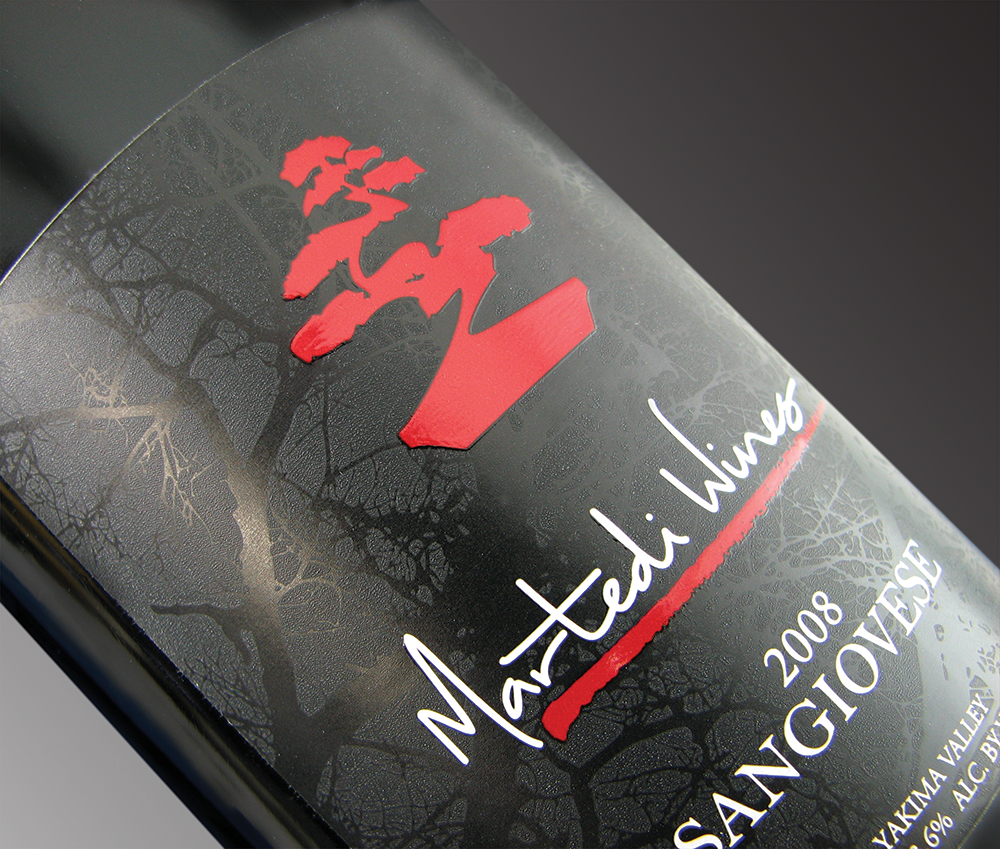
If the contents of your label are the function, embellishments are the form. They’re the finishing touches that transform a label from packaging to art and give your products a high-end feel.
Resource Label Group offers clients several different ways – and price points – to make your packaging feel more premium. These effects include foil stamping, specialty inks, die cuts, embossing and many more techniques.
No matter which embellishments you choose, the first step in making the best label possible is always the same: Loop in your label partner as early as possible.
When you involve the label experts early, they can suggest exactly which combination of label material and embellishment techniques will give you the effect you want – in the most cost-efficient way possible.
GET STARTED, LEARN MORE OR GET A QUOTE
Embellishments are often used to create premium packaging for:
- Wines and spirits
- Personal care and beauty
- Gourmet foods and beverages
- Nutraceuticals
get creative with your next label
An Endless Array of Decorative Options
There are six main types of embellishments, which can be combined to extend your artistic options:
- Embossing and Debossing
- Foil Stamping
- Custom Die Cuts
- Varnishes, UV Coatings and Laminates
- Custom Screen Prints
- Specialty Inks
Read on to find out more about each technique.
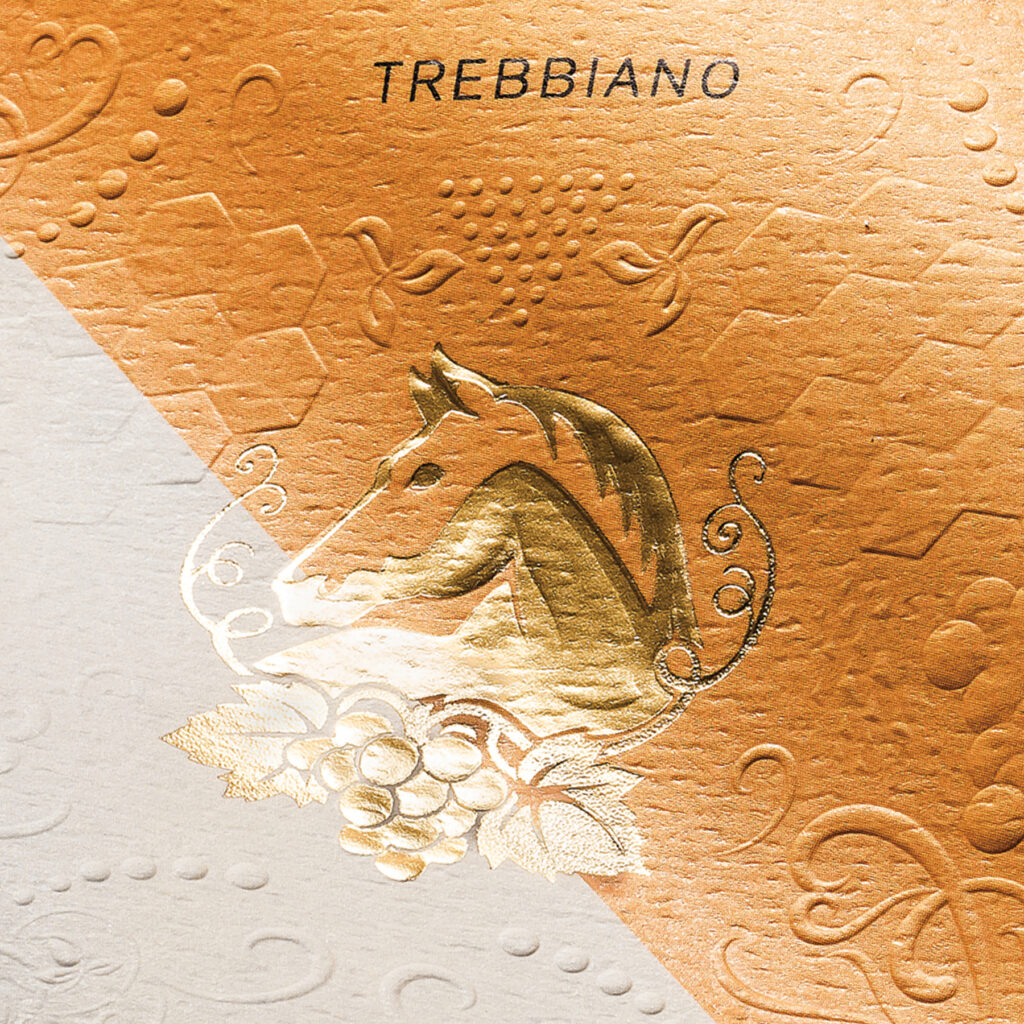
Embossing and Debossing
WHAT THEY ARE AND HOW THEY WORK
To emboss a label, the printer sandwiches the label between two dies (metal plates), allowing patterns, letters, or other decorative items to be raised off the surface. Debossed areas are cut into the label surface, creating a depressed effect.
THE EFFECT
Embossing and debossing elevate your label by creating depth and texture that inspire consumers to pick up your product and run their fingers over the indentations.
how to use it
Embossing and debossing can be done in combinations of offset, digital or flexographic printing, which means you can use them with any size print run. You can even choose the shape and direction of your embossing effect:
- Bevel in or out
- Sculpted
- Raised roof/round
- Raised flat
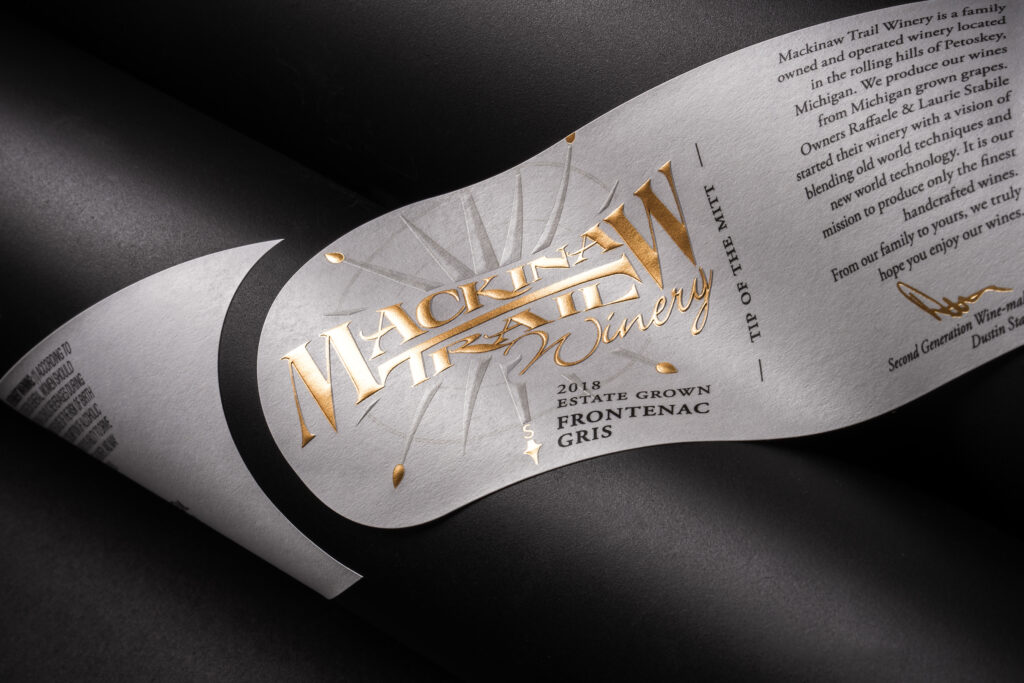
GOOD TO KNOW
- Embossing and debossing are most effective when used sparingly as an accent instead of being applied to the entire label.
- You’ll get better results by keeping your artwork simple. Adding extra dimensionality to already complex art can make it look busy or distorted.
Hot and Cold Foil Stamping
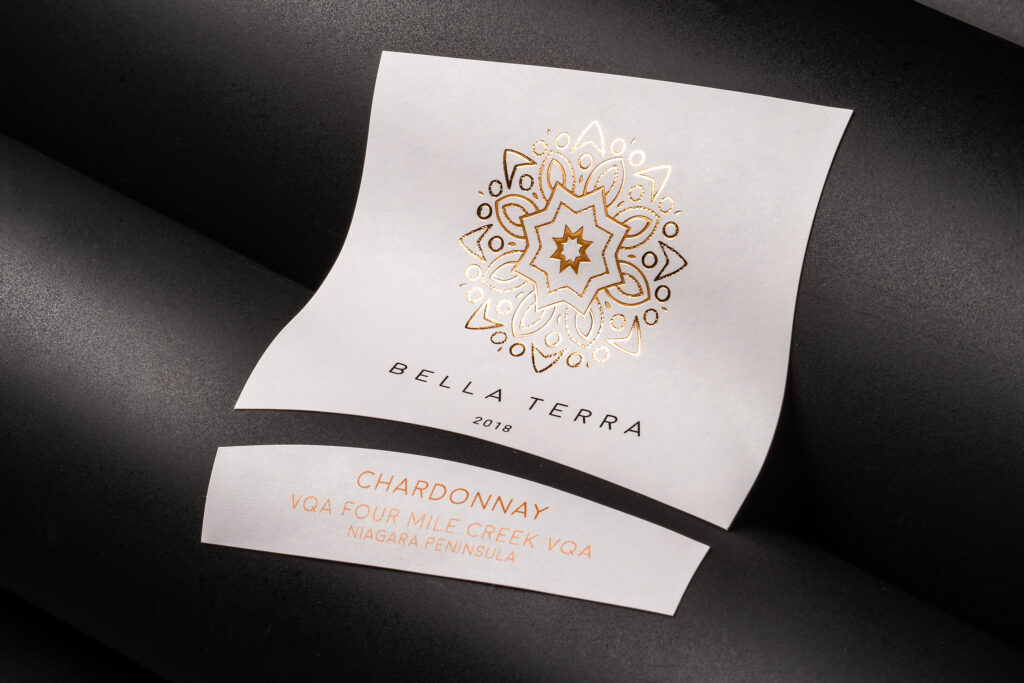
GOOD TO KNOW
- Hot foil can be applied to rougher label stock and textured paper, while cold foil needs a completely flat, smooth surface to work its magic.
- Cold foil is not compatible with embossing, so you need to use hot foil. However, cold foil can be more cost-efficient.
WHAT IT IS AND HOW IT WORKS
Hot: Heated metal engraved plates press foil sheets onto the label surface, shiny side up. Hot foil has a slightly raised appearance. This technique is often used in combination with embossing to increase the three-dimensional effect.
Cold: Chilled plates apply a thin foil sheet to the label surface and then the excess foil is stripped away. Next, the label is run under an ultraviolet light to cure the adhesive.
the effect
Hot foil stamping has a raised appearance, while the cold variety lies completely flat against the label surface.
HOW TO USE IT
A common feature on labels for wines and spirits, food and cosmetics, foil can be used for entire labels or sparingly to highlight specific areas of a label. You can also print on top of the foil section.
Custom Die Cuts
WHAT IT IS AND HOW IT WORKS
Metal shapes are used to cut your label into something other than its native rectangle form. When you combine die cuts with a clear container, you can show off more of the product inside, making them perfect for liquids. Resource Label Group has a library of 25,000+ die cuts and the capability to create a custom one just for you.
THE EFFECT
In addition to giving your label a different shape, die cutting can create intricate corners. They also help guide the consumer’s eye where you want it to go.
how to use THEM
Highlight a promotion or design a truly custom shape for unique containers. Custom die cuts also have practical applications: you can embed RFID tags for tracking and enhanced security. And their rounded corners make labels more durable.
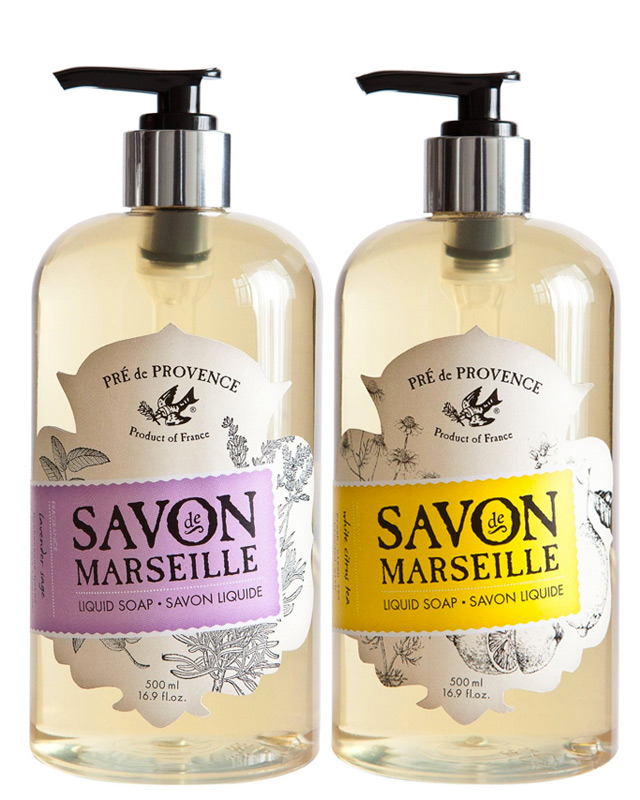
GOOD TO KNOW
When labels are too large for the container, it looks sloppy and consumers notice. Custom die cuts are ideal for labels on small containers.
Varnishes, UV Coatings and Lamination
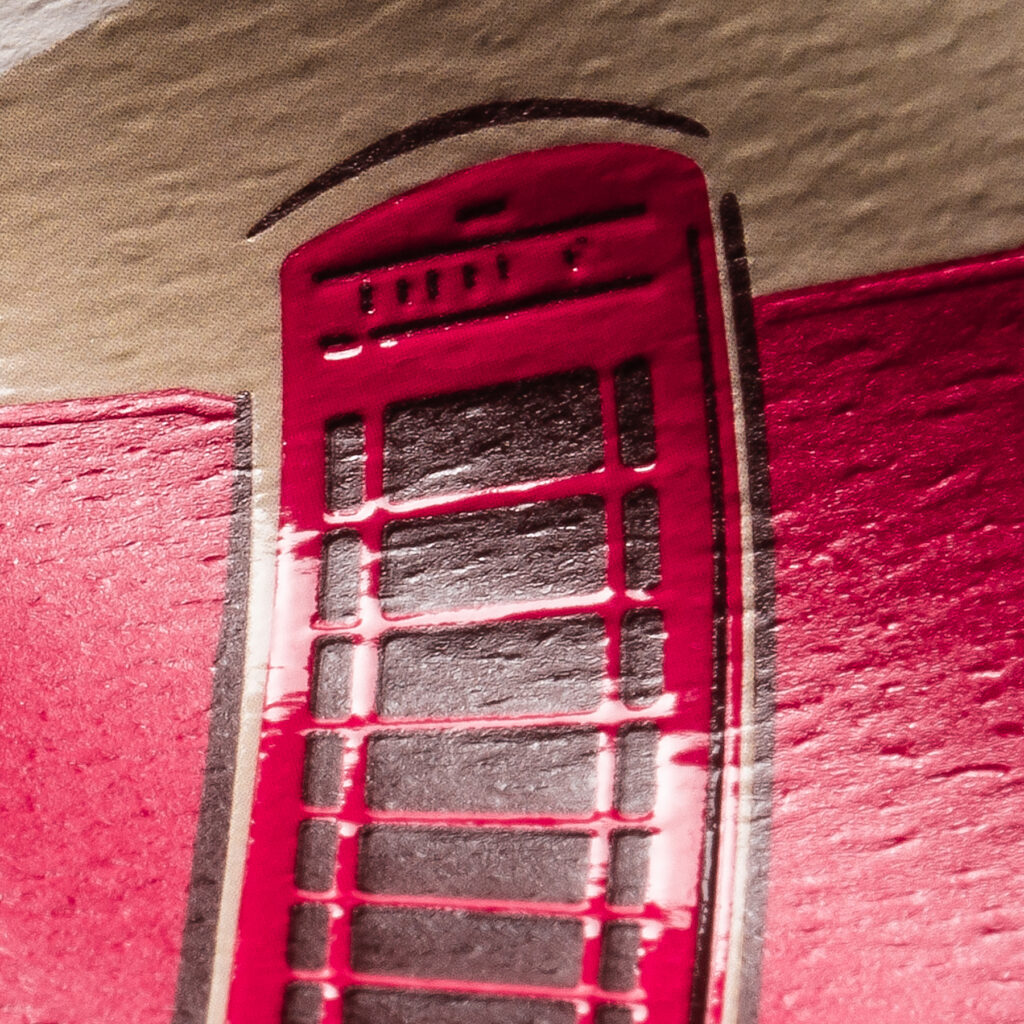
GOOD TO KNOW
Printing multiple SKUs or different versions within the same press run? Self-wound laminates are compatible with variable data printing. It also works with foil stamping.
What they are AND HOW THEY WORK
These decorative coatings help keep your face stock safe and dry.
the effect
Varnishes: Available for the entire label or spot applications, varnishes can provide a variety of tactile finishes, including matte, gloss and velvety soft touch.
UV Coatings: Ultraviolet coatings act as sunscreen for your labels and add shine. Used judiciously, they can spotlight the best elements of your label design.
Laminates: These clear films are applied over your label to protect it from abrasion, tearing, moisture and chemical ingredients such as oil. They are available in matte and gloss finishes.
HOW TO USE IT
You don’t have to limit yourself to just one kind of coating. In fact, combining tactile elements with other coatings can differentiate your packaging.
Custom Screen Printing
WHAT IT IS AND HOW IT WORKS
Screen printing is a technique that involves applying a mesh pattern to a product surface, then pressing or pumping ink through the mesh openings and onto the product to produce the image.
It provides a high degree of area coverage with precise details and strong color intensity.
THE EFFECT
Screen printing makes text pop, directing the customer’s eye where you want it to go.
how to use IT
Printing on glass bottles? Make your label more sustainable by printing it directly on the container instead of on paper. You’ll create less waste and save the consumer from having to remove it before recycling.
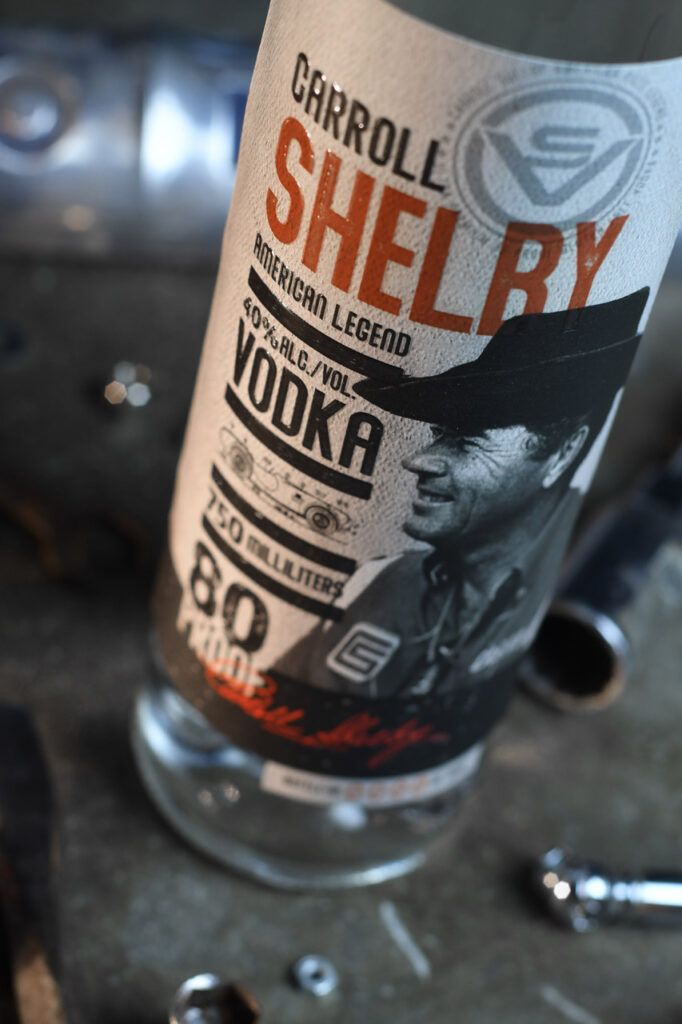
GOOD TO KNOW
Screen printing is a smart choice for durable goods like appliances. These labels hold up well against UV light, moisture and chemicals without bubbling or peeling.
Specialty Inks
WHAT THEY ARE AND HOW THEY WORK
Metallic Inks: These inks contain reflective metal particles such as copper, zinc, or aluminum. Once dried, these inks reflect the light and add shine.
Thermochromic and Light-Sensitive Inks: These inks change color when exposed to variations in temperature or light.
Opaque White Inks: The unsung heroes of label embellishments, these solid white inks are used under other colors to make them appear opaque, vibrant, and true to their original color.
the effect
Metallic inks create an illusion similar to foil stamping but at a lower cost. Thermochromic and light-sensitive inks add an unexpected level of interactivity to labels. Opaque whites make the colors printed on top more vibrant
HOW TO USE IT
Is there an optimal temperature for consuming your food or beverage products? Thermochromic ink can let customers know when they’re ready to eat or drink.
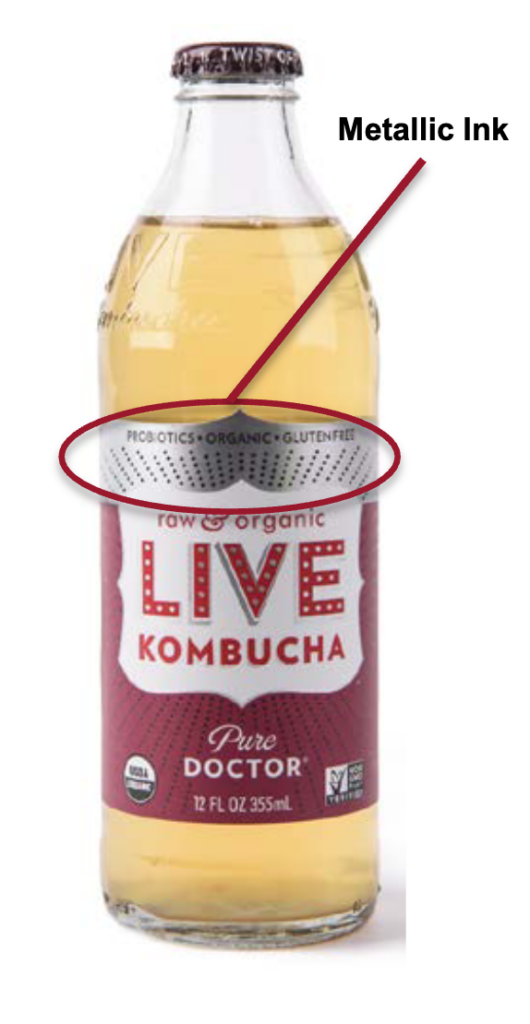
GOOD TO KNOW
Printing on a non-white base? Use opaque white inks to keep the base color from showing through the label. This is sometimes necessary when printing labels digitally.
A Different Kind of Ice Bucket Challenge
Paper labels that come apart or completely fall off bottles have posed a considerable challenge to wine, spirits, beer, and beverage producers for many years. Brand owners have simply opted to accept this assuming poor label performance in wet or damp environments is normal and even acceptable.
But it doesn’t have to be that way.
Our Ice Breaker labels with AquaLoc 100 waterproof adhesive can stand up to 24 hour hours in ice water without wrinkling, dissolving or peeling, all while preserving your text and graphics.
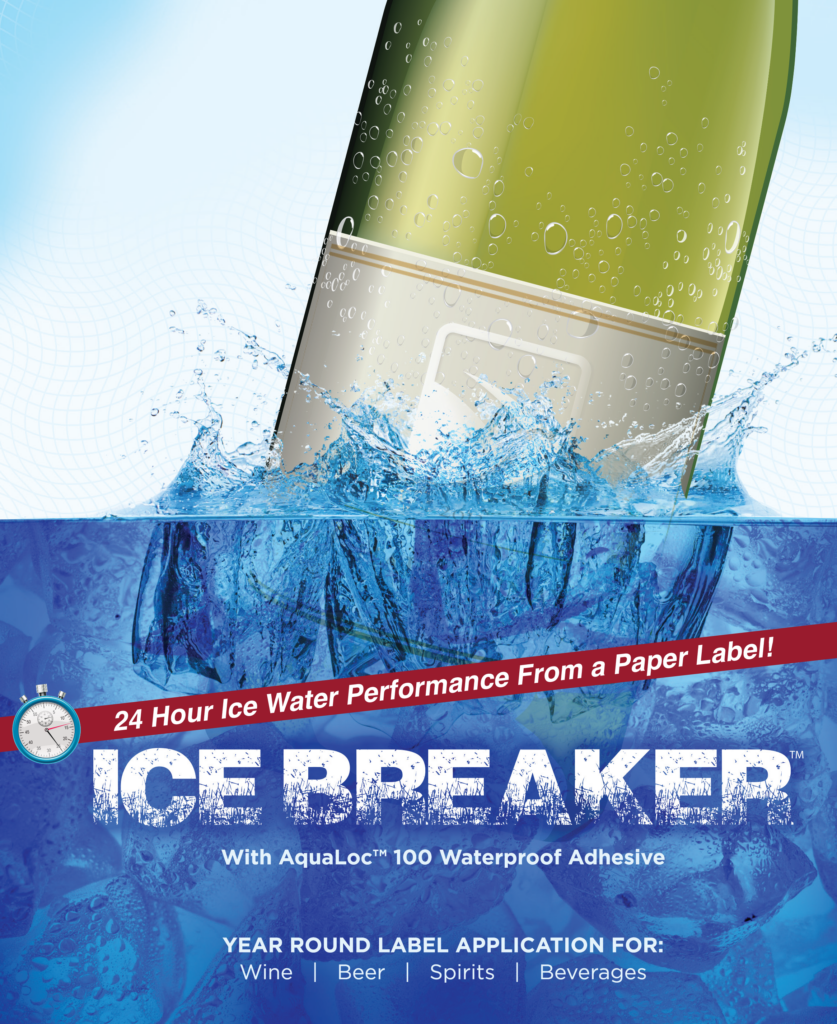
We Don’t Stop There
Other available finishing touches include:
- Scent technology
- Labels that change color
- Holograms
- Bottle neck tags
- Reverse printing
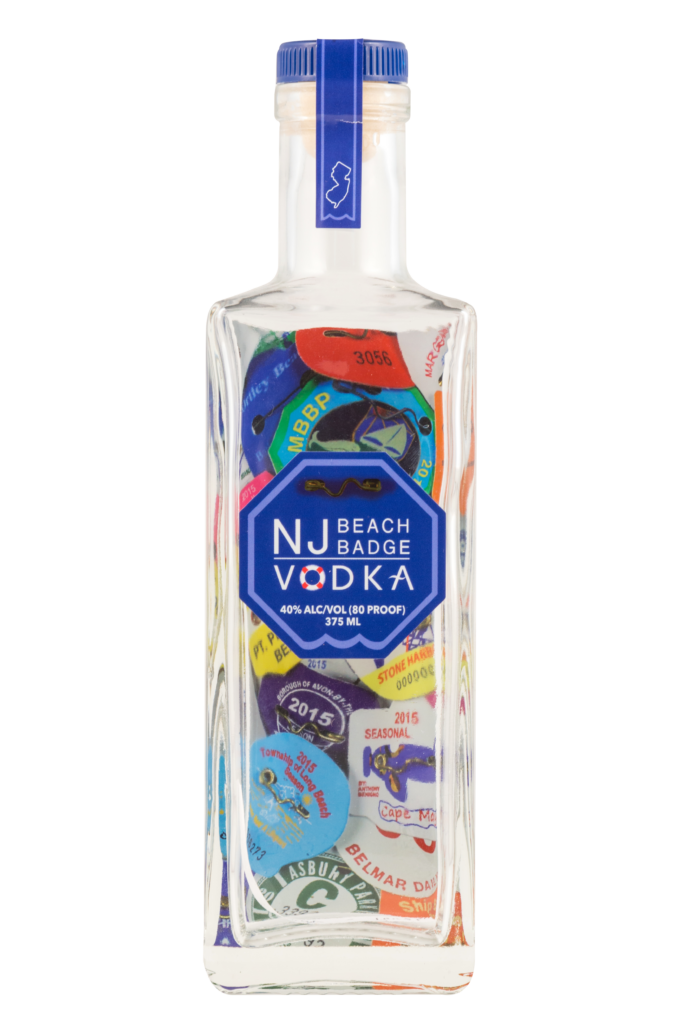
Smarten Up
Why stop at having a snazzy label when you can have one that’s also smart?
You can embed NFC (near-field communication) tags into your labels that let customers authenticate, register, or learn more about your products with their smartphones.
10 Ways to Polish Your Packaging
Package design is no small undertaking. You have to consider who the audience is for your product, whether there are any regulatory compliance concerns, where it will be used, and whether your container will dictate the need for special labels.
Top Takeaway: Invest in Quality Packaging Materials.
High-quality materials are aesthetically and functionally invaluable to your product packaging because they improve shopper perceptions of your brand.
Click the button below to download our guide to creating more professional-looking products.
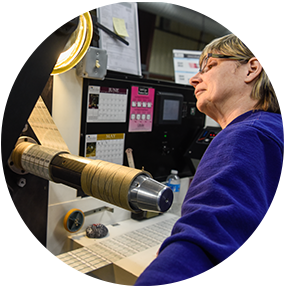
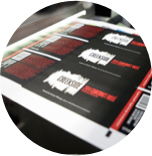
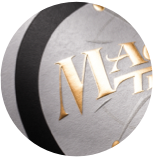
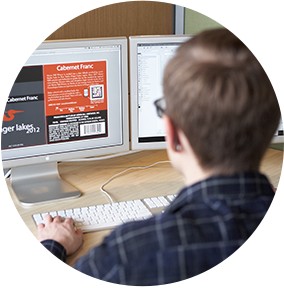
WHO WE ARE
National Reach.
Local Touch.®
Resource Label Group is backed by a national network with more than 20 locations throughout the U.S. and Canada. This means we can get the materials you need at a competitive price. And you get the customer service you’d expect from a local printer you’ve been dealing with for years.
Plus, if one of our locations hasn’t tackled your particular labeling challenge, odds are, another has. Don’t reinvent the wheel. Instead, tap into the knowledge base we’ve already built and get your project off the ground faster.
Get in touch with resource label group
Ready to Take Your Labels to the Next Level?
To get the process started, call us at 1.888.526.8177 (M-F, 8 a.m. – 5 p.m. CT) or tell us more about your project. You can also jump straight to requesting a quote.